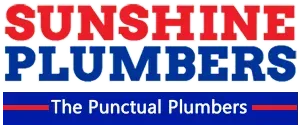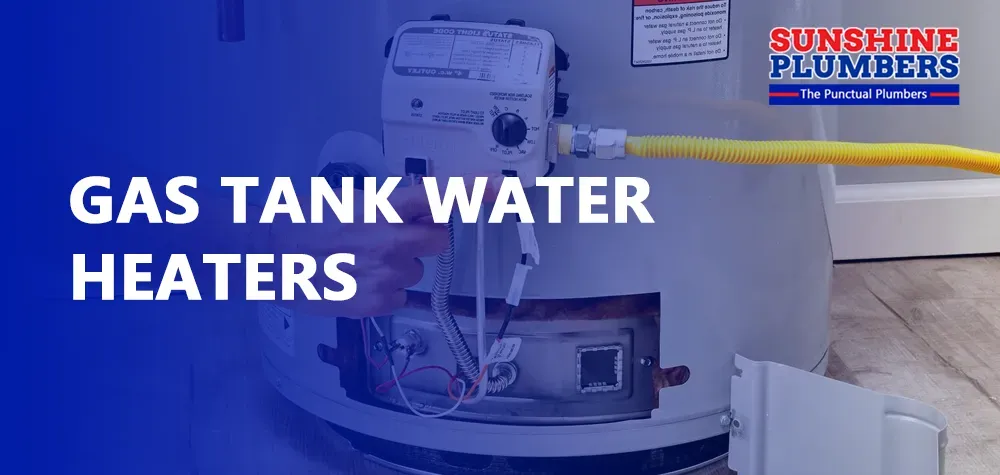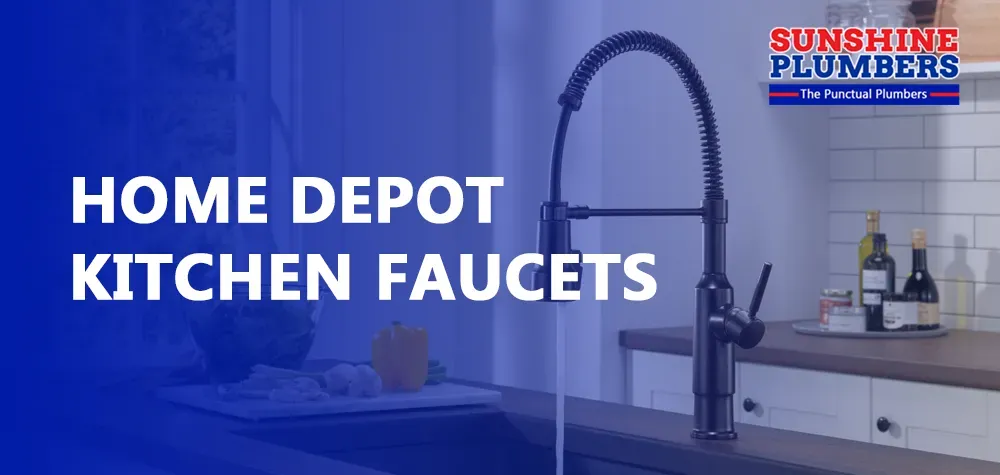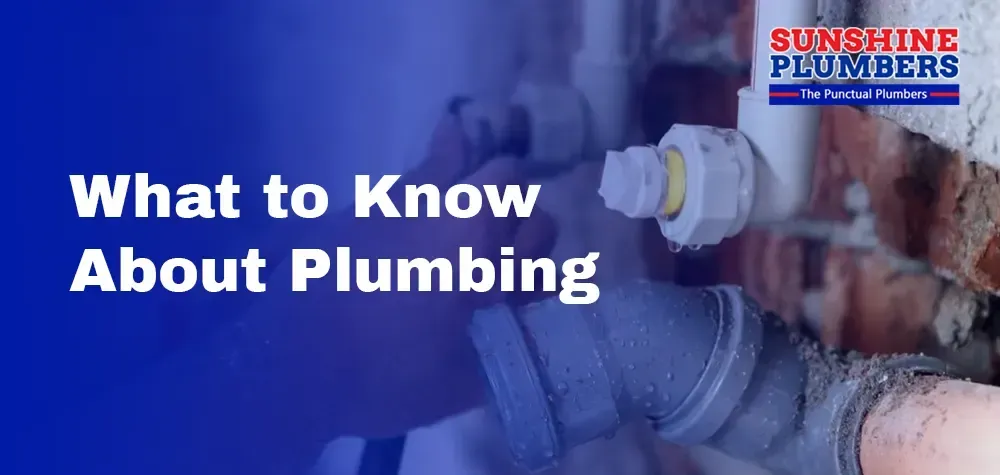What to Know About Plumbing: Your Comprehensive Guide
When it comes to plumbing, having a solid understanding of the essentials can save you time, money, and stress. At Sunshine Plumbers, we believe that an informed homeowner is a proactive homeowner. In this guide, we'll delve into crucial aspects of plumbing, ensuring you're well-equipped to tackle common issues and make informed decisions.
Understanding Plumbing Basics
Plumbing is more than just pipes and faucets; it's a complex system that keeps your home functioning smoothly. Here's a breakdown of the essentials:
1. Pipes and Fixtures:
Knowing the types of pipes and fixtures in your home is crucial. From copper to PVC, each material has its own set of advantages. Recognizing the signs of aging or damage in pipes and fixtures is essential for homeowners to address potential issues before they become major problems. Here are common indicators that your pipes or fixtures may be experiencing wear and tear:
Corrosion:
- Check for signs of corrosion on metal pipes, such as rust or greenish deposits. Corrosion weakens the structural integrity of pipes and can lead to leaks or bursts if not addressed promptly.
Leakage:
- The presence of water stains, puddles, or damp areas around pipes or fixtures indicates a potential leak. Even minor leaks can escalate quickly, causing water damage and mold growth.
Reduced Water Pressure:
- A sudden decrease in water pressure may signal a blockage or damage in the pipes. This could be due to mineral buildup, corrosion, or other issues affecting the flow of water.
Discoloration of Water:
- If you notice brown or rusty water when you turn on the tap, it could be a sign of corrosion within the pipes. Discolored water may also indicate the presence of contaminants, requiring immediate attention.
Unusual Sounds:
- Strange noises, such as banging, clanking, or whistling, when using faucets or appliances, could indicate issues within the plumbing system. These sounds may be linked to loose pipes, water hammers, or other structural problems.
Visible Pipe Damage:
- Inspect pipes for visible cracks, dents, or bulges. These physical deformities can compromise the integrity of the pipes and lead to leaks or ruptures.
Foul Odors:
- Unpleasant odors emanating from drains or fixtures may indicate a buildup of debris or sewage within the pipes. This issue not only affects the functionality of your plumbing but also poses health risks.
Frequent Clogs:
- If you experience recurrent clogs in drains or toilets, it may suggest an underlying issue within the pipes, such as tree root infiltration, mineral buildup, or damaged sewer lines.
Age of Pipes:
- Knowing the age of your plumbing system is crucial. Many materials, like galvanized steel, have a limited lifespan and are more prone to issues as they age. If your home has older pipes, consider proactive inspections and potential replacements.
Regularly checking for these signs of aging or damage allows homeowners to catch potential plumbing issues early on, preventing extensive damage and costly repairs. If you notice any of these indicators, it's advisable to consult with a professional plumber to assess the situation and recommend the appropriate course of action.
2. Common Plumbing Issues:
Familiarize yourself with prevalent plumbing problems like leaks, clogs, and dripping faucets. Discover proactive measures to prevent these issues and when it's time to call in the professionals.
Understanding common plumbing issues is crucial for homeowners to maintain a well-functioning plumbing system. Here, we delve into three prevalent problems—leaks, clogs, and dripping faucets—and provide insights on how to recognize, prevent, and address these issues effectively.
Leaks:
- Leaks are among the most common plumbing issues and can occur anywhere in your home's plumbing system. Signs of leaks include water stains, mold growth, or unexplained increases in water bills. To prevent leaks, regularly inspect visible pipes for signs of damage, corrosion, or moisture. Be attentive to any unusual sounds, such as dripping or hissing, which may indicate an unseen leak. If you suspect a leak, it's crucial to address it promptly to prevent water damage and the growth of mold and mildew.
Preventive Measures: - Conduct regular visual inspections of pipes.
- Repair or replace damaged or corroded pipes promptly.
- Install leak detection devices to identify issues early.
- When to Call Professionals:
- If you notice a sudden increase in water bills.
- When you identify water stains or discoloration on walls or ceilings.
- If there are unexplained sounds of water running when no fixtures are in use.
Clogs:
- Clogs can occur in drains, toilets, or sewer lines, causing slow drainage or complete blockages. Common culprits for clogs include hair, soap scum, grease, and foreign objects. Signs of a clog include slow drainage, gurgling sounds, or foul odors emanating from drains. Preventing clogs involves proper disposal practices and regular maintenance to keep pipes clear.
Preventive Measures: - Use drain screens to catch hair and debris.
- Avoid pouring grease down the drain.
- Dispose of non-flushable items properly.
- When to Call Professionals:
- If DIY methods such as plunging or using drain cleaners are ineffective.
- When multiple drains are affected simultaneously.
- Persistent foul odors despite attempts to clear the drain.
Dripping Faucets:
- A dripping faucet might seem like a minor issue, but it can waste a significant amount of water over time and lead to increased water bills. A worn-out washer, O-ring, or other internal components often cause the constant dripping. Ignoring a dripping faucet not only wastes water but can also cause damage to the faucet itself.
Preventive Measures: - Regularly check faucets for leaks and address them promptly.
- Replace worn-out washers and O-rings during routine maintenance.
- When to Call Professionals:
- If the dripping persists after attempting basic repairs.
- When you notice a sudden increase in water bills without an obvious explanation.
3. DIY Plumbing Tips:
Not every plumbing issue requires a professional. Gain insights into basic DIY fixes, from unclogging drains to fixing a running toilet. We'll guide you through step-by-step processes, empowering you to handle minor problems independently.
Unclogging Drains:
- Materials Needed:
- Plunger
- Baking soda
- Vinegar
- Hot water
Step-by-Step:
a. Begin by using a plunger to create a tight seal around the drain.
b. Plunge vigorously in an up-and-down motion for about 15-20 seconds.
c. For a natural drain cleaner, pour half a cup of baking soda followed by half a cup of vinegar down the drain.
d. Allow the mixture to sit for 10-15 minutes and then flush the drain with hot water.
Fixing a Running Toilet:
- Materials Needed:
- Adjustable wrench
- Replacement flapper
- Replacement fill valve (if necessary)
Step-by-Step:
a. Remove the toilet tank lid and inspect the flapper. If it's damaged or worn, replace it.
b. If the flapper isn't the issue, check the water level. Adjust the float arm to set the water level at least 1 inch below the overflow tube.
c. If the toilet continues to run, the fill valve may be faulty. Turn off the water supply, flush the toilet to empty the tank, and replace the fill valve following the manufacturer's instructions.
Fixing a Leaky Faucet:
- Materials Needed:
- Adjustable wrench
- Replacement washer
- Plumber's tape
Step-by-Step:
a. Turn off the water supply to the faucet.
b. Remove the faucet handle using the wrench.
c. Inspect the washer for wear or damage; replace if necessary.
d. Apply the plumber's tape to the threads of the faucet stem to create a watertight seal.
e. Reassemble the faucet, turn on the water supply, and check for leaks.
Dealing with Low Water Pressure:
- Materials Needed:
- Adjustable wrench
- Plumber's tape
- Clean cloth
Step-by-Step:
a. Check for mineral deposits or debris in the faucet aerator. Unscrew the aerator and clean it thoroughly.
b. Examine the water shut-off valve to ensure it's fully open. Turn it clockwise to open it completely.
c. If the issue persists, inspect pipes for leaks, and tighten any loose connections using the wrench.
d. Apply the plumber's tape to the threads of the showerhead or faucet, as this can enhance water pressure.
Clearing a Garbage Disposal Jam:
- Materials Needed:
- Allen wrench
- Wooden dowel or broom handle
Step-by-Step:
a. Turn off the garbage disposal and unplug it.
b. Use the Allen wrench to manually turn the disposal's motor from the bottom. This may help dislodge the jam.
c. If the disposal is still jammed, insert a wooden dowel or broom handle into the disposal from the top and manually rotate the blades to free the obstruction.
d. Turn the disposal back on to test its functionality.
Remember, while these DIY plumbing tips are effective for minor issues, it's crucial to recognize when a problem requires professional attention. If a DIY fix doesn't resolve the issue or if you're uncertain about the problem's severity, it's advisable to contact a licensed plumber to ensure a thorough and lasting solution.
Essential Plumbing Maintenance
Regular Inspections:
Learn the importance of routine plumbing inspections. Identifying potential issues early can save you from major headaches down the line.
Here's a checklist for homeowners to conduct simple yet effective plumbing inspections:
- Check for Leaks:
- Inspect all visible pipes, both indoors and outdoors, for any signs of leaks, such as water stains, puddles, or dampness.
- Look for corrosion or rust on metal pipes, which can indicate potential leaks.
- Examine Faucets and Fixtures:
- Check faucets for drips or leaks. Repair or replace any faulty washers or O-rings.
- Ensure that all fixtures, such as sinks and showers, are draining properly without slow drainage or blockages.
- Inspect Toilet Components:
- Check for any leaks around the base of the toilet. This could indicate a faulty wax ring that needs replacement.
- Ensure that the toilet flushes properly and that there are no continuous running or ghost flushing issues.
- Examine Water Heater:
- Look for signs of corrosion or rust on the water heater tank.
- Check for water around the base of the water heater, as this may indicate a leak.
- Test Water Pressure:
- Turn on faucets and showers to assess water pressure. Low pressure may indicate a blockage or an issue with the water supply.
- Check for any sudden changes in water pressure, as this could signal an underlying problem.
- Inspect Visible Pipe Connections:
- Ensure that all visible pipe connections, such as under sinks and behind toilets, are secure and free from leaks.
- Look for signs of moisture or water damage around pipe joints.
- Check for Unusual Sounds:
- Listen for any unusual sounds when using faucets, flushing toilets, or running appliances. Strange noises could indicate issues within the plumbing system.
- Inspect Drains:
- Remove drain stoppers and visually inspect drains for any debris or buildup.
- Run water through drains to ensure they are draining efficiently.
- Examine Outdoor Plumbing:
- Check outdoor hose bibs for leaks.
- Inspect the sprinkler system for leaks, damaged pipes, or malfunctioning components.
- Test Shut-Off Valves:
- Ensure that all shut-off valves are functioning correctly. Turn them on and off to confirm they operate smoothly and effectively.
- Check Water Meter:
- Monitor your water meter for any unexplained changes. A sudden increase in water usage could indicate a hidden leak.
- Inspect Sump Pump (if applicable):
- If you have a sump pump, test its functionality by pouring water into the sump pit and ensuring that the pump activates as expected.
Performing these routine inspections can help you catch potential plumbing issues early, saving you from major problems and costly repairs. If you identify any issues during your inspection or if you're unsure about the condition of your plumbing system, don't hesitate to consult with a professional plumber for a more thorough assessment.
Choose Sunshine Plumbers for Expert Care: Your Trusted Plumbing Partners
When it comes to your home's plumbing, trust is paramount. Sunshine Plumbers is not just a service; we are your dedicated partners in maintaining the health and efficiency of your plumbing system. Our team of experienced professionals is committed to delivering unparalleled service, whether it's addressing minor issues through our insightful DIY tips or tackling complex problems with precision and expertise. With a focus on transparency, reliability, and customer satisfaction, Sunshine Plumbers stands as a beacon of trust in the plumbing industry. Let us be your go-to choice for all plumbing needs, ensuring that your home's essential systems are in the hands of skilled professionals who prioritize your peace of mind.




